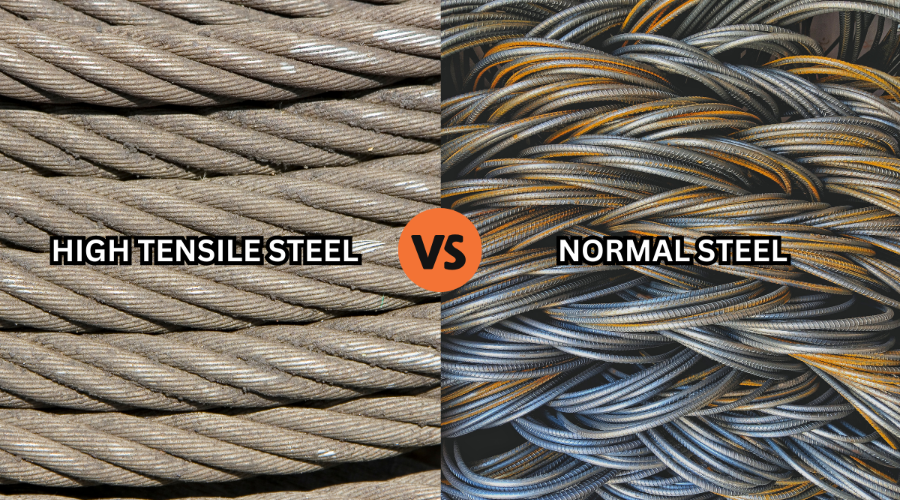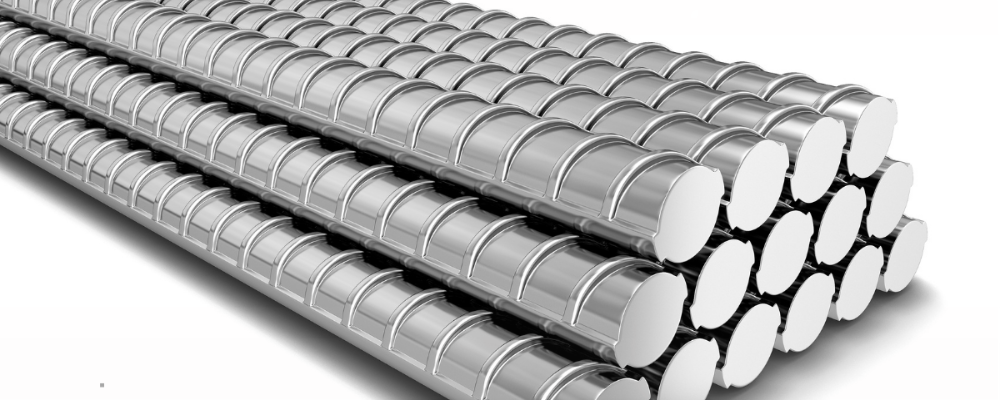The steel selection for construction is still a complex task for many. Determining the quality of the steel product strengthens your overall building quality. But how to choose the right one among tons of options? When the market is established with a wide range of steel products, people may be confused about choosing the right one. The thought processes and recommendations of individuals are different, which don’t help you choose the appropriate choice aligned with your needs.
Right now, the builders are choosing high tensile steel compared to a normal one. The reasons behind them are many, and those are valid too. It is a high-performing metal suitable for small- to large-scale construction projects. Here the point you need to focus on is how to identify the high tensile steel. To make it clear, herewith the properties, applications, and types are uncovered. By reading this article, you can get an idea to go with the right choice.
What is High Tensile Steel?
High tensile steel is a strong and durable material widely used in various industries. It includes types like “high strength low alloy steel” (HSLA) which offers high strength, toughness, and reduced weight compared to conventional carbon steel. It is a type of alloyed carbon structural steel that includes various alloying elements such as vanadium, tungsten, chromium, nickel, and molybdenum.
This steel includes micro-alloy, which helps the material to carry higher strength and lower weight when compared to normal steel. It is often used in applications like pressure vessels, bridges, automotive components, bridges, buildings, and construction equipment.
Properties of High Tensile Steel
Below are the properties of high tensile steel that make you know why it is fabulous to use in construction:
High Tensile: High tensile strength is a key to yielding high-strength or high-tensile steel. In general, the tensile strength can range up to 2,000 N/mm², which can greatly vary from one another depending on the grade. The industries where strength and hardness are the key concerns require choosing the selective material.
Hardness: Hardness is a significant characteristic of high tensile steel. The steel with more hardness contributes to resisting deformation and wear.
Weldability: High tensile steel carries low weldability when compared to other steel types in the market. Hence, builders often need to follow special welding procedures to ensure proper joint performance, especially in high-stress applications. It can be an ideal choice where structural support is essential.
Corrosion Resistance: High tensile steel is not your best choice when you prefer the material with corrosion resistance. However, this property can be enhanced with specific coatings and treatments, named galvanization, yet the result is not up to the mark.
Applications of High Tensile Steel
As you know, high tensile steel has exceptional versatility, strength, and durability, with which we can use it in various industries. Here’s what they are:
Construction Industry: The construction of high-rise buildings, bridges, and infrastructure requires sufficient support and stability. For being a robust structure, we need a quality steel product with excellent support like high tensile steel.
Automotive Industry: Improving vehicle safety is a major concern of companies. While using high-tensile steel, we can efficiently enhance crash resistance, stability, and durability. You can widely notice them in car body structures, engine components, chassis, and suspension.
Other Applications: High tensile steel is also a part of military applications, pressure vessels, and boilers. Its enhanced strength and durability allow equipment to withstand high temperature and pressure.
Advantages of High Tensile Steel
High tensile steel is significantly helpful in numerous ways, and they are as follows:
Durable and Long-lasting: High tensile steel is primarily valued for its robustness and wear and tear resistance. It improves the strength and lifespan of structures and components, minimizing the need for frequent repair, maintenance, and replacements.
Improved Safety: High strength contributes to enhanced safety. When it is used in the automotive industry, it provides super-good structural stability, crash resistance, and longevity.
Cost-Effectiveness: Of course, the initial investment of high tensile steel might be costly, but you can save more through lower maintenance and replacement costs. The materials will be strong and durable; you don’t need to maintain or repair them often.
Higher Strength: Strength is a crucial advantage of high tensile steel. Being a lightweight material, it has been used in various applications, including automotive and aerospace industries, where weight reduction is essential.
Types of High Tensile Steel Used in Construction
The types of high tensile steel are primarily used in reinforced concrete structures, ensuring higher strength, durability, and structural integrity. Here are those:
Structural Steel: It is a kind of industrial-grade steel containing high tensile strength suitable for various building and construction applications. The presence of carbon content ranges from 0.20% to 0.25%, which is harder than commercial steel.
HSLA Steel (High-Strength Low-Alloy): This steel has a combination of high tensile strength and formability, valued for its excellent durability and cost-efficiency. It is often used in the automotive and construction industries, where a high strength-to-weight ratio is a primary need.
Rebar Steel: Rebar is a renowned steel product widely used in reinforced concrete structures. Due to its durability and tensile strength, you can actively prevent cracks in roads, buildings, bridges, and other concrete applications.
Difference Between High Tensile Steel and Normal Steel

| Parameters | High Tensile Steel | Normal Steel |
| Composition | Contains higher carbon content, ranging from 0.15% to 0.25%. It is often mixed with other alloying elements, such as manganese, chromium, and vanadium. | Normal steel is possessed with a lower carbon content such as 0.05% to 0.25% and is more ductile. |
| Uses | High tensile steel contains lower ductility and malleability. So it supports a large amount of weight, and is less likely to break under heavy use. | Normal steel is often found in the manufacturing of pipes, because it has higher ductility and malleability. |
| Cost | High tensile steel is little costlier than normal steel as it needs more carbon content and ideal manufacturing process. But the result was worth the cost. | Normal steel costs lower than high tensile steel. |
| Applications | High tensile steel is often used in heavy machinery, bridges, high-rise buildings, prestressed concrete and automotive components. | It is used in structural beams, pipelines, sheet metal, and general construction. |
Final Lines
High tensile steel contains superior strength and durability that helps various construction projects to obtain the desired requirement. Its enhanced features increase the usage of steel in various industries and applications. Hopefully, this article helps you to understand the significant usage of high tensile steel and how it benefits your application.

